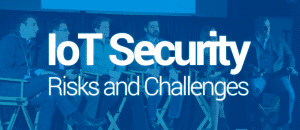Blockchain is emerging as a potential IoT security tool. The study shows that adoption of blockchain has doubled from 9 per cent to 19 per cent in the last 12 months.

Despite companies having an increased focus on IoT security, only around half (48 per cent) of businesses can detect if any of their IoT devices suffers a breach, reveals a new study.
The study by digital security firm Gemalto found that companies are calling on governments to intervene, with 79 per cent asking for more robust guidelines on IoT security, and 59 per cent seeking clarification on who is responsible for protecting IoT.
Even though many governments have already enacted or announced the introduction of regulations specific to IoT security, most (95 per cent) businesses believe there should be uniform regulations in place.
“Given the increase in the number of IoT-enabled devices, it’s extremely worrying to see that businesses still can’t detect if they have been breached,” said Jason Hart, CTO, Data Protection at Gemalto.
“With no consistent regulation guiding the industry, it’s no surprise the threats – and, in turn, vulnerability of businesses – are increasing. This will only continue unless governments step in now to help industry avoid losing control,” Hart added.
The firm surveyed 950 IT and business decision makers globally.
More companies focusing on IoT security
As per the study findings, spending on protection has grown from 11 per cent of IoT budget in 2017 to 13 per cent now.
Nearly all (90 per cent) respondents believe that IoT security is a big consideration for customers.
Around 14 per cent businesses now see IoT security as an ethical responsibility, an increase of almost three times compared to a year ago (4 per cent)
With the number of connected devices set to top 20 billion by 2023, Gemalto suggested that businesses should act quickly to ensure that their IoT breach detection is as effective as possible.
Challenges in securing connected devices and IoT services
Protecting an increasing amount of data has become an issue, with only three in five (59 percent) of those using IoT and spending on IoT security admitting they encrypt all of their data.
Consumers are also not impressed with the efforts of the IoT industry, with 62 percent believing security needs to improve. When it comes to the biggest areas of concern 54 per cent fear a lack of privacy because of connected devices, followed closely by unauthorised parties like hackers controlling devices (51 per cent) and lack of control over personal data (50 per cent).
Blockchain emerging as potential IoT security tool
Meanwhile, the industry is also trying to address the issues itself, and blockchain is emerging as a potential technology.
The study showed that adoption of blockchain has doubled from 9 per cent to 19 per cent in the last 12 months. A quarter (23 per cent) of respondents believe that blockchain technology would be an ideal solution to use for securing IoT devices, with 91 per cent of organisations that currently don’t use the technology are likely to consider it in the future.
Businesses are also employing other methods to protect themselves against cybercriminals. The majority (71 per cent) encrypt their data, while password protection (66 per cent) and two factor authentication (38 per cent) remain prominent.








